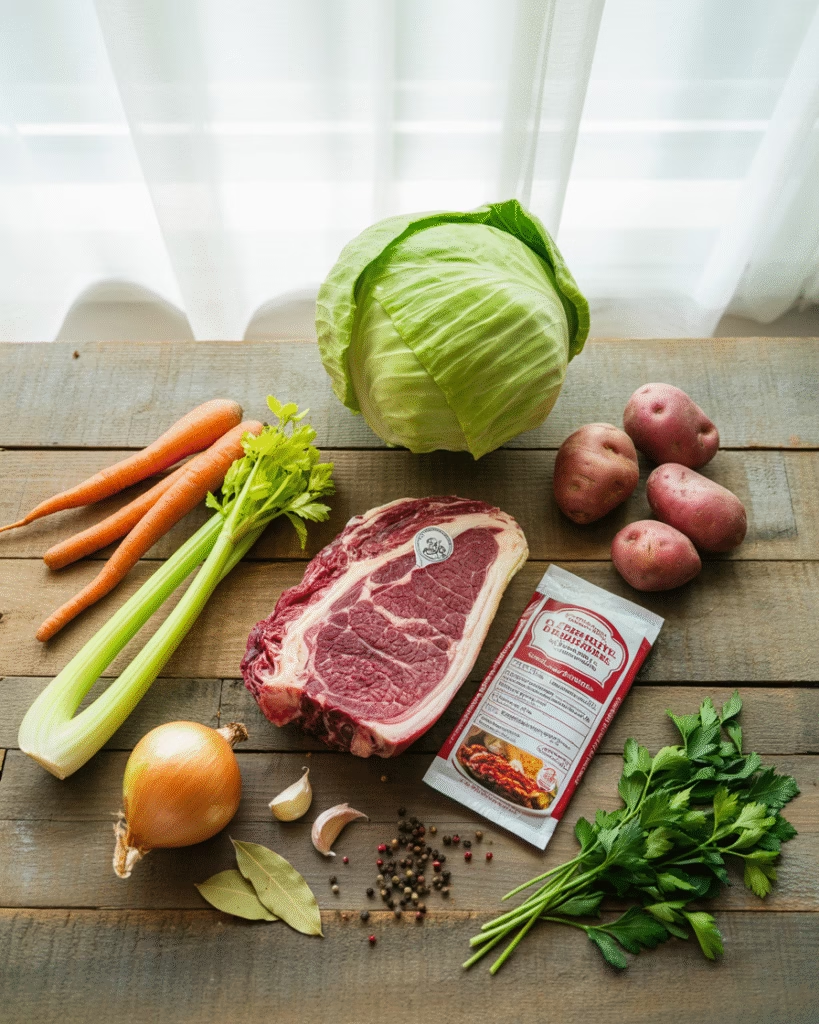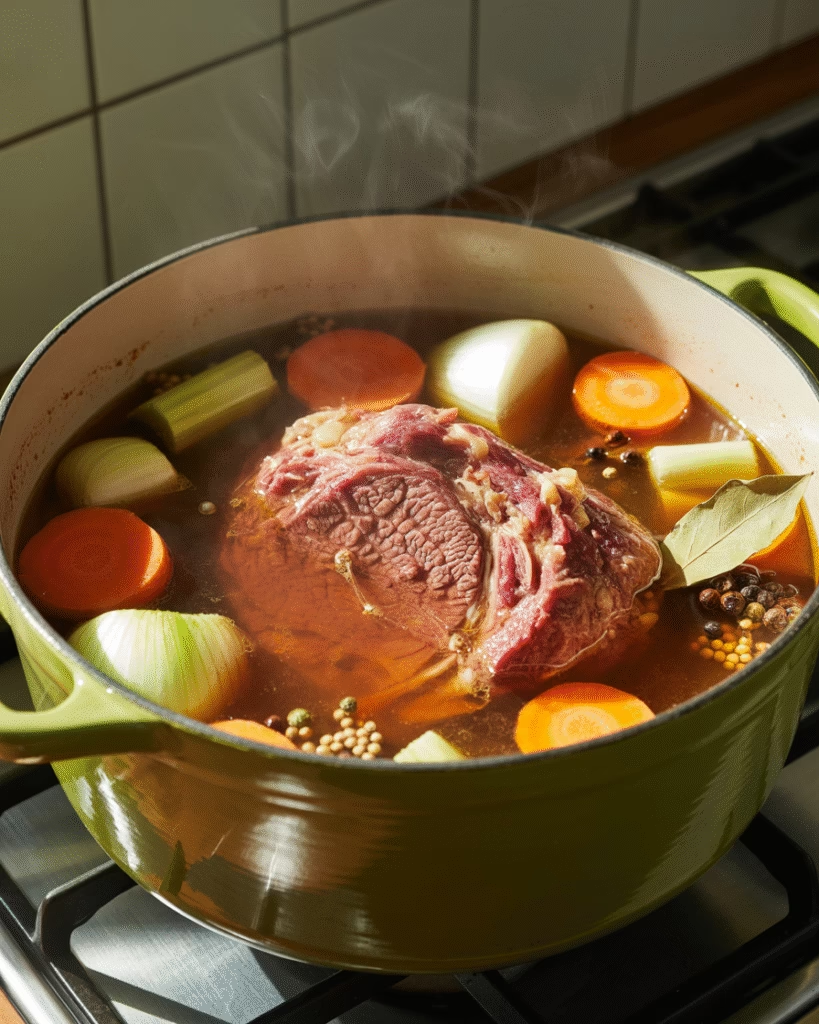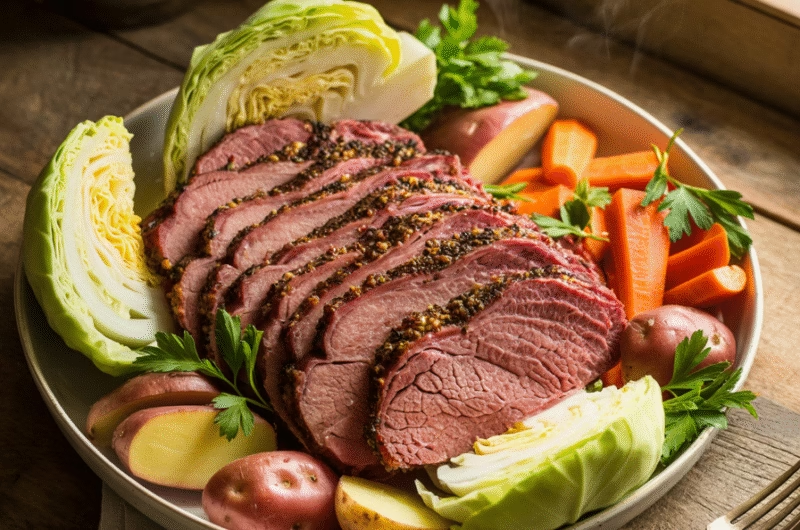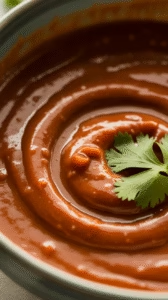Corned beef and cabbage is the kind of comfort food that makes you want to throw a party just for yourself. It’s hearty, it’s satisfying, and honestly, it’s the perfect excuse to eat a whole plate of cabbage and call it dinner. If you’re anything like me, you’ve probably sampled a few versions of this Irish classic, some better than others. So, I’m here to walk you through my go-to approach for making corned beef and cabbage that’s tender, flavorful, and—most importantly—super easy to pull off. Whether you’re cooking for St. Patrick’s Day or just craving a nostalgic meal, grab your apron and let’s get started.
Why This Dish Always Wins
Corned beef and cabbage is the ultimate crowd-pleaser. It’s the kind of dish that brings the whole family together, even if you’re just cooking for two. The smell alone is enough to make anyone hungry. I personally love how simple it is to throw together, but the payoff is always massive. Plus, it’s a dream for leftovers—nothing beats a corned beef sandwich the next day.
Ever wondered why this meal is so popular?
It’s all about the combo of salty, savory beef and fresh, sweet cabbage. It’s the kind of thing that’s great for beginners and seasoned cooks alike. And honestly, it’s forgiving—mess it up a little, and people still say, “Hey, that’s not bad!”
The Real Deal: Ingredients You’ll Need

Here’s the short list of what you need for the classic version. I’ll also throw in a few fun variations you can try later, but let’s keep it simple for now.
- 1 (3- to 4-pound) corned beef brisket with spice packet
- 1 large onion, quartered
- 3 carrots, cut into chunks
- 3 stalks celery, cut into 2-inch pieces
- 2 pounds red potatoes, halved
- 1 small head cabbage, cut into eighths
- Salt and pepper (to taste)
Pro tip: If you want to go full Irish, throw in a bay leaf or a splash of Guinness. It changes the flavor ever so slightly, but in a good way.
Cooking the Corned Beef: The Key Steps
Cooking corned beef isn’t rocket science, but it does take a little patience. Here’s how I do it, step by step.
Rinsing and Prepping
- First, take the corned beef out of its packaging and give it a good rinse. This helps remove excess salt, which can make the dish too salty.
- Pat it dry with paper towels.
- Don’t forget to save that spice packet—it’s full of flavor!
Simmering the Beef

- Put the corned beef in a large pot or Dutch oven. Add the spice packet, onion, carrots, and celery.
- Cover with enough water to submerge the beef.
- Bring it to a simmer, then lower the heat.
- Let it simmer for about 2½ to 3 hours, or until the beef is fork-tender.
FYI: If you’re using a slow cooker, just add the beef and veggies, cover with water, and cook on low for 8–10 hours. Easy, right?
Adding the Veggies: Timing Is Everything

This is where some people mess up. Add the veggies at the wrong time, and you’ll end up with mush.
Potatoes First
- After the beef is almost tender, add the potatoes.
- Let them simmer for 20–30 minutes until they’re soft but not falling apart.
Cabbage Last
- Add the cabbage wedges to the pot.
- Simmer for another 20–30 minutes until the cabbage is tender but still has a bit of bite.
IMO: If you want crispier cabbage, you can cook it separately in a skillet. This is especially helpful if you’re serving a crowd and want to keep the texture just right.
Separating the Steps: Stove Top vs. Slow Cooker
Not everyone has the same tools, so here’s a quick comparison.
Stove Top Method
- Pros: More control over tenderness, easier to adjust flavors.
- Cons: You have to watch it, and it can take up to 4 hours.
Slow Cooker Method
- Pros: Literally set it and forget it. Super hands-off.
- Cons: Less flavor control, and you can’t sear the meat first.
Pro tip: If you want the best of both, sear the corned beef in a skillet first, then finish it in the slow cooker. This gives you that extra layer of flavor.
Upgrading Your Recipe: Fun Twists to Try
Who says corned beef and cabbage has to be basic? Here are a few ways I like to jazz it up.
Go for the Beer
- Substitute some of the water for a bottle of Guinness or another stout beer.
- The beer adds depth and a little sweetness.
Switch Up the Veggies
- Swap out carrots or potatoes for parsnips, turnips, or even rutabaga.
- These veggies add a different flavor and make the dish more interesting.
Add Some Extras
- Try tucking in a few slices of Irish bacon or a handful of leeks for extra richness.
- A little horseradish sauce on the side is a game-changer.
Pro tip: If you want to keep things light, try roasting the cabbage with a little olive oil instead of boiling it.
Plating Like a Pro: Making It Look Good
A good plate is all about color and texture. Here’s how I like to serve it up:
- Slice the beef across the grain for maximum tenderness.
- Arrange the cabbage, potatoes, and carrots on the plate.
- Drizzle a little balsamic reduction or horseradish sauce over the top.
- Garnish with a sprinkle of fresh parsley or chives.
IMO: If you want to go full food blogger, a little sprinkle of everything makes it look extra fancy.
Leftovers: The Secret to the Best Sandwich Ever
Leftovers are the best part of this dish. Here’s what I do:
- Use leftover corned beef for sandwiches.
- Slice the beef, add a bit of mustard, and pile on the cabbage.
- If you want to be extra fancy, add a slice of cheddar or a fried egg.
Pro tip: If you have extra cabbage, try making a quick slaw for the next day.
Common Mistakes to Avoid
Even experienced cooks can make mistakes. Here are the most common ones and how to avoid them.
Mistake #1: Adding Veggies Too Early
- This can make everything mushy.
- Solution: Always add potatoes and cabbage in stages.
Mistake #2: Overcooking the Beef
- Too much time on the stove and the beef can fall apart.
- Solution: Check the beef with a fork. If it’s tender, it’s ready.
Mistake #3: Skipping the Rinse
- Not rinsing the corned beef can make the dish too salty.
- Solution: Always give it a good rinse before cooking.
Bringing It All Together: The Perfect Meal
Corned beef and cabbage isn’t just food—it’s comfort. It’s the kind of meal that’s perfect for a rainy day, a holiday, or just a Saturday night in.
Need a quick answer?
- Rinse the beef, cook it with veggies, and serve it with a smile.
- Leftovers are a bonus.
Remember: The best way to make this dish is the way you like it. Add a little beer, swap the veggies, or try a new sauce. It’s all fun and delicious.
Final Thoughts and a Personal Touch
Cooking corned beef and cabbage is one of those things that always feels like a win. It’s easy to make, hard to mess up, and it tastes even better the next day. I like to make it for friends and family, and it never fails to bring people together.
So, what’s your favorite way to serve corned beef and cabbage?
Do you go classic, or do you throw in some extra flavor? I’d love to hear your tips and tricks.
Oh, and if you want to try something totally different, swap out the cabbage for coleslaw and call it a “corned beef bowl.” It’s a total cheat, but it’s delicious.
There you have it—my friendly, no-fuss guide to making corned beef and cabbage. Grab your apron, fire up the stove, and let’s make some magic. And if all goes wrong, just blame it on the beer. 🙂
Quick Recap: The Key Takeaways
- Always rinse the corned beef before cooking.
- Add veggies in stages to keep their texture.
- Leftovers are a must—sandwiches are the best.
- Experiment with beer, sauces, and extra veggies.
Now, get cooking and enjoy every bite. This dish is a classic for a reason, and with a few simple tweaks, it’s all yours. Happy eating!
The Only Corned Beef and Cabbage Recipe You’ll Ever Need
Course: MainCuisine: IrishDifficulty: Easy6
servings15
minutes3
hours450
kcal3
hours25
minutesThis classic corned beef and cabbage recipe is the ultimate comfort meal—tender, flavorful, and easy to make. Perfect for St. Patrick’s Day or any cozy night in, it’s a one-pot wonder that brings everyone to the table.
Ingredients
1 (3- to 4-pound) corned beef brisket, with spice packet
1 large onion, quartered
3 carrots, cut into chunks
3 stalks celery, cut into 2-inch pieces
2 pounds red potatoes, halved
1 small head green cabbage, cut into eighths
Salt and pepper (to taste)
Optional: 1 bay leaf, 1 bottle Guinness or stout beer (replace some water)
Directions
- Prep the Beef: Rinse the corned beef under cold water and pat dry.
- Simmer: Place the beef in a large pot or Dutch oven. Add the spice packet, onion, carrots, and celery. Cover with water (or beer for extra flavor). Bring to a simmer, then reduce heat and cook for 2½ to 3 hours, or until the beef is fork-tender.
- Add Potatoes: After the beef is almost tender, add the potatoes. Simmer for 20–30 minutes until soft.
- Add Cabbage: Add the cabbage wedges and simmer for another 20–30 minutes until tender
- Serve: Slice the beef across the grain. Arrange the beef, potatoes, carrots, and cabbage on a platter. Drizzle with a little broth and garnish with fresh parsley.
Notes
- Notes
For leftovers, try making corned beef sandwiches with mustard and sautéed cabbage.
Leftovers keep well in the fridge for up to 4 days. - Nutrition (per serving)
Calories: 450
Protein: 32g
Fat: 20g
Carbohydrates: 35g
Fiber: 6g




